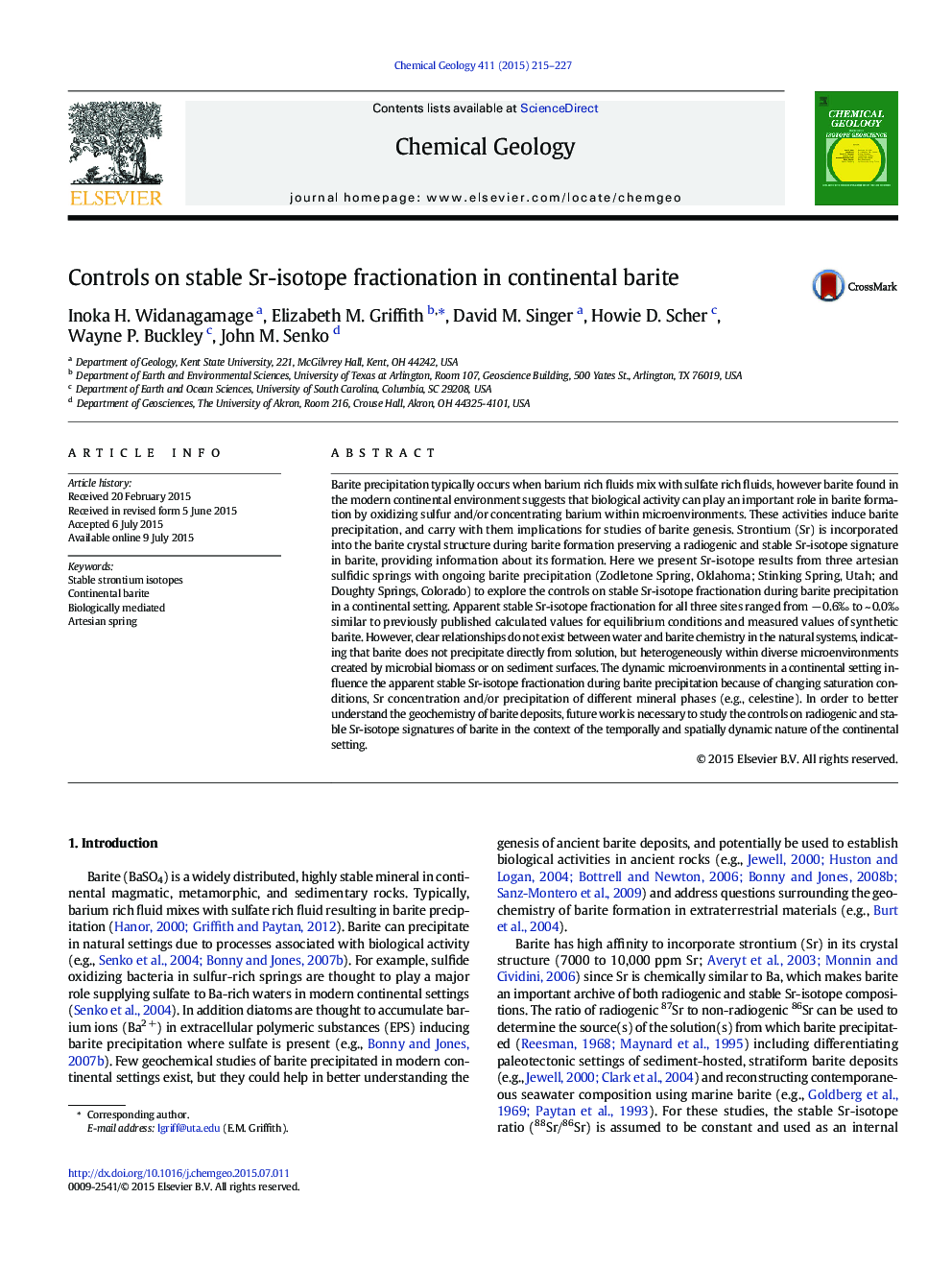| Article ID | Journal | Published Year | Pages | File Type |
|---|---|---|---|---|
| 6436339 | Chemical Geology | 2015 | 13 Pages |
â¢Large range of stable Sr isotope ratios in continental waters and bariteâ¢Continental barite precipitation is induced by microbial biomass.â¢Sub micron-scale heterogeneity of Sr incorporated in barite.â¢Evidence of celestine formation with barite at micron-scale in terrestrial spring.
Barite precipitation typically occurs when barium rich fluids mix with sulfate rich fluids, however barite found in the modern continental environment suggests that biological activity can play an important role in barite formation by oxidizing sulfur and/or concentrating barium within microenvironments. These activities induce barite precipitation, and carry with them implications for studies of barite genesis. Strontium (Sr) is incorporated into the barite crystal structure during barite formation preserving a radiogenic and stable Sr-isotope signature in barite, providing information about its formation. Here we present Sr-isotope results from three artesian sulfidic springs with ongoing barite precipitation (Zodletone Spring, Oklahoma; Stinking Spring, Utah; and Doughty Springs, Colorado) to explore the controls on stable Sr-isotope fractionation during barite precipitation in a continental setting. Apparent stable Sr-isotope fractionation for all three sites ranged from â 0.6â° to ~ 0.0â° similar to previously published calculated values for equilibrium conditions and measured values of synthetic barite. However, clear relationships do not exist between water and barite chemistry in the natural systems, indicating that barite does not precipitate directly from solution, but heterogeneously within diverse microenvironments created by microbial biomass or on sediment surfaces. The dynamic microenvironments in a continental setting influence the apparent stable Sr-isotope fractionation during barite precipitation because of changing saturation conditions, Sr concentration and/or precipitation of different mineral phases (e.g., celestine). In order to better understand the geochemistry of barite deposits, future work is necessary to study the controls on radiogenic and stable Sr-isotope signatures of barite in the context of the temporally and spatially dynamic nature of the continental setting.
